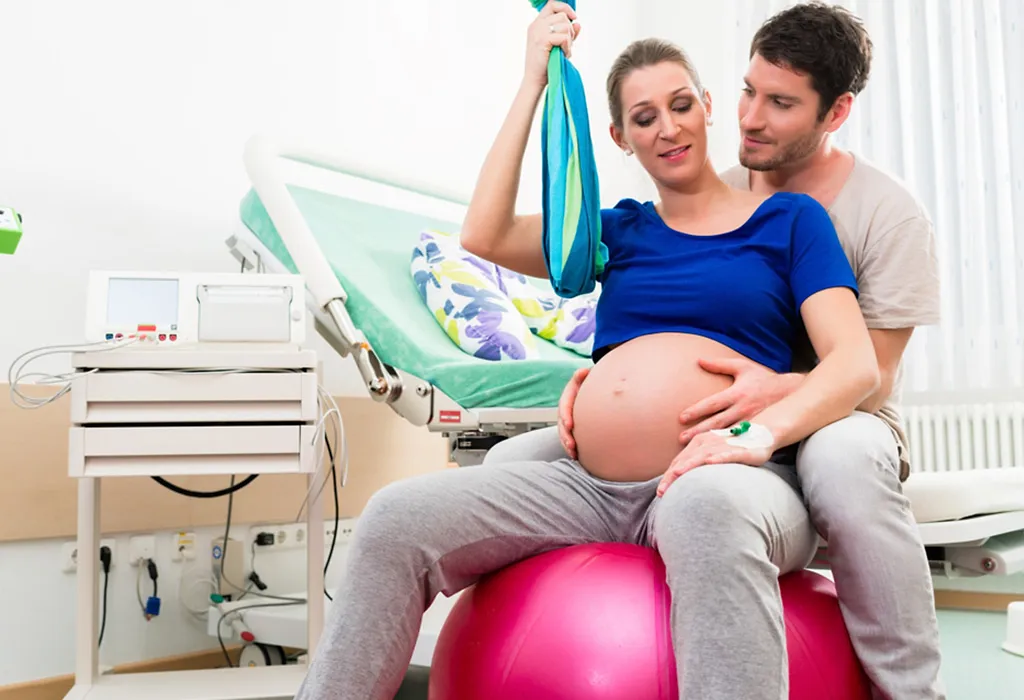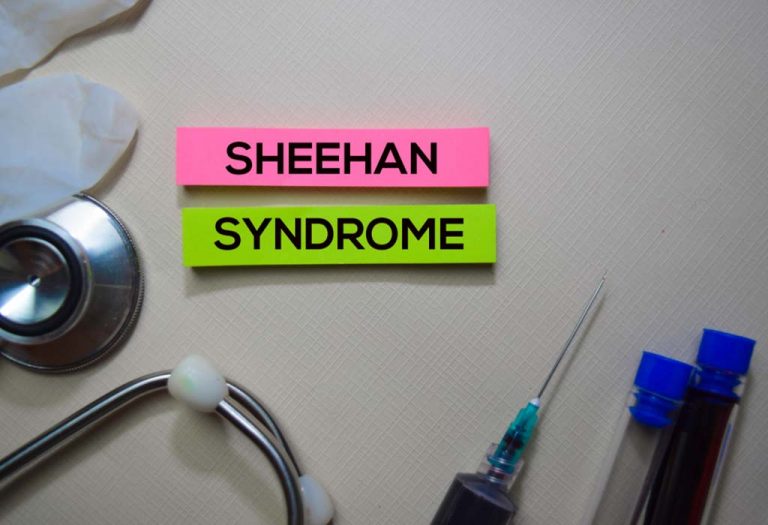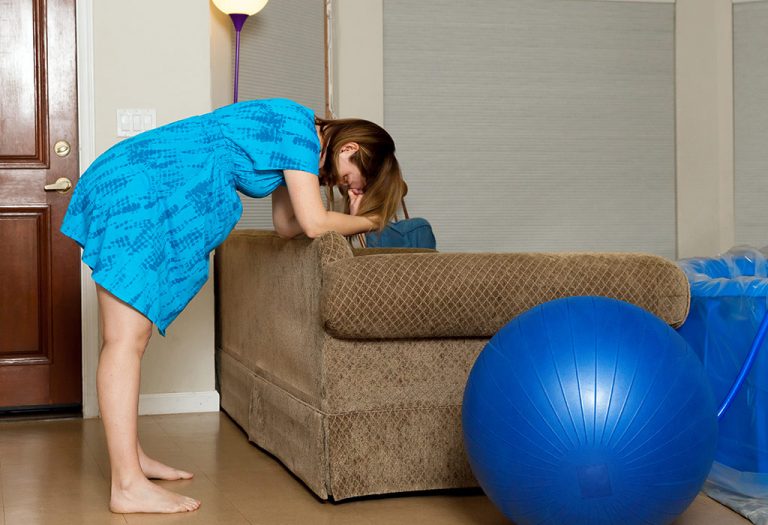Lightening in Pregnancy – When Does Baby Drop & Signs

Pregnancy is a time when your body goes through a whole lot of changes. It can be confusing and make you anxious, especially if it is your first time. As the end of your pregnancy approaches, your body starts to prepare itself for labour and delivery. Baby dropping is one of the signs that the time is fast approaching. There are some more signs to watch out for also, and knowing them will help you prepare yourself better. This article is highly recommended to those who are nearing their due date. Here we will talk about the phenomenon called baby dropping, ways for you to cope with it, etc.
What Does Lightning or Baby Dropping Mean?
As you get closer to giving birth, your baby will move into a head-down position and settle lower into your pelvis to get ready for labour. This is called “lightening” or “baby dropping.” This is a normal part of preparing for delivery. It’s called lightening because when your baby moves down, there’s less pressure on your lungs and diaphragm, which can make it easier to breathe and feel lighter (1).
Why Do Babies Drop?
When somebody mentions baby dropping, it might scare you. But it actually means ‘Lightening’. Lightening is the term used for baby dropping, which is a sign of the labour approaching. As the labour approaches, the baby drops into the pelvis in an effort to get into the best position within the uterus to pass easily through the birth canal. This helps stretch your pelvic muscles ahead of labour.
When Are Babies More Likely to Drop?
Baby dropping or lightening during pregnancy can happen anytime between 34 to 36 weeks of pregnancy in first-time pregnancies (2). In later pregnancies, the baby might not drop until labour has started. If you are wondering whether it can be predicted in which week the baby would drop, you must understand that it is not accurate science. There are no strict timelines as to when this might occur, and in some instances, it might be prior to four weeks before the labour starts.
Signs of Lightening in Pregnancy
Each case of pregnancy is unique; the time of lightening and the signs that may accompany it will vary. However, if you are wondering what it feels like when the baby drops, the given below are signs the baby has dropped:
1. Frequent Urination
The pressure is likely to move to your lower abdomen from the upper part, especially on the bladder. As the baby’s head lowers on your bladder, it results in more pressure on it. So, your trips to the bathroom will be more (3).
2. It Becomes Easier to Breathe
As the baby drops into your pelvis, the pressure on your diaphragm lessens. The shortness of breath that you had been experiencing earlier will no more be an issue once the baby drops. Breathing process will soon be back to normal again (4).
3. Improved Appetite
When the baby drops, the pressure on the stomach is also eased significantly. This means that you will be able to eat more than you did at the beginning of the third trimester.
4. The Baby Bump Changes
After your baby’s head moves into the pelvis, it is likely to seem as if your stomach is hanging lower. When you sit down, you will be able to feel the baby more.
5. Frequent Lower Back Pain
When the baby starts to get heavier and slides down your abdomen, finally settling in the pelvis, you will experience lower back pain more frequently.
6. A Changed Walk
The pressure on the pelvis increases as the baby drops. It changes your walk as well, and you might feel though you are waddling (4).
7. Haemorrhoids
The pressure could affect the blood vessels in the rectum which may lead to haemorrhoids.
Though these signs of baby dropping during pregnancy tell you that your delivery is approaching, these are not clear-cut indicators of exactly when the labour would start.
If you are only 35 weeks pregnant and are experiencing symptoms of baby dropping, you need not worry about it. Sometimes, expectant mothers do not experience belly drop in pregnancy even when it is time. We recommend that you check with your obstetrician to confirm if the pregnancy is progressing normally. If you’ve already had your obstetrician confirm a healthy pregnancy, you may want to talk about the points given below and implement them if they are safe for you to do.
How Long After Baby Dropped Do You Go Into Labour?
After your baby drops, it’s a sign that your body is getting ready for labour, but the timing can vary for everyone. For first-time pregnancies, labour may still be a few weeks away, often starting 2 to 4 weeks after the baby drops. In later pregnancies, the baby might not drop until right before labour begins (1) (5).
What Should You Do If You Don’t Experience Baby Dropping?
If you are nearing your due date and don’t see any signs of baby dropping, there are a few things that you could try. But these should be done only after at least 36 weeks of pregnancy and post you have consulted your obstetrician.
1. Increase Physical Activity
Don’t do anything too strenuous, but increasing the number of walks each day can make the baby move and pressurise the cervix. Watch out for Braxton-Hicks or false labour contractions though which are sometimes triggered by walking.
2. Mind How You Sit
Do not sit cross-legged as it can push the baby back up. Instead, you can sit with your knees spread open and lean forward to coax the baby to move down.
3. Try a Birthing Ball
Using a birthing ball can give you some relief from back pain while assisting the baby to move into the pelvis. It can also increase blood flow to the baby (6).
4. Do Some Squats
Doing squats can help widen your pelvic opening and ease the baby downwards while strengthening your legs and hips for delivery. Ensure you do them only after medical advice and avoid them if you have not been exercising during your pregnancy.
6. Try Swimming
Use the backstroke for swimming with your belly up or simply float on your back. If you have pelvic pain, don’t do breaststrokes (7).
7. Avoid Sitting for Long
If your job involves sitting on a chair for a long period of time, be sure to take frequent breaks during work hours. You could just stretch your legs a bit every hour or so to encourage the baby to drop.
FAQs
1. Is baby dropping painful?
Lightening of pregnancy is not usually painful, but you might feel increased pelvic pressure, occasional discomfort, or even sharper sensations in the pelvic area as the baby settles lower.
2. What does it mean if the baby doesn’t drop?
If the baby hasn’t dropped by your due date, it may not be a concern. Sometimes the baby won’t drop until labour starts. Your doctor may monitor your progress and discuss options if needed.
3. How does baby dropping affect the shape of your belly?
After pregnancy dropping, belly might look lower and slightly smaller, as the baby shifts downward into the pelvis (8).
If your baby has dropped, be sure to visit your obstetrician for a check-up. This will help her determine the due date accordingly and give you a tentative estimation of when labour is likely to start. After baby dropping, it is just a matter of days before you get to take your little one in your arms.
Disclaimer: The information given in this article is not intended or implied to be a substitute for professional medical advice, diagnosis, or treatment.
References/Resources:
1. Lightening in Pregnancy: When Does Baby Drop?; Healthy Start Coalition of Hardee; https://www.healthystarthhp.org/lightening-in-pregnancy/
2. The Third Trimester; The Johns Hopkins Medicine; https://www.hopkinsmedicine.org/health/wellness-and-prevention/the-third-trimester
3. Labor & Delivery; Cleveland Clinic; https://my.clevelandclinic.org/health/articles/9676-labor-delivery
4. Week 34; NHS; https://www.nhs.uk/start-for-life/pregnancy/week-by-week-guide-to-pregnancy/3rd-trimester/week-34/
5. How to Tell When Labor Begins; American College of Obstetricians and Gynecologists; https://www.acog.org/womens-health/faqs/how-to-tell-when-labor-begins
6. Benefits of Using a Yoga Ball During Pregnancy and Labor; Cleveland Clinic; https://health.clevelandclinic.org/birthing-ball
7. Swimming in pregnancy; Tommy’s; https://www.tommys.org/pregnancy-information/im-pregnant/exercise-in-pregnancy/swimming-pregnancy
8. Pregnancy: Dropping (Lightening); Kaiser Permanente; https://healthy.kaiserpermanente.org/health-wellness/health-encyclopedia/he.pregnancy-dropping-lightening.aa88159
Also Read:
Baby Head Engaged
Child Birthing Hips
Baby Position in Womb
Was This Article Helpful?
Parenting is a huge responsibility, for you as a caregiver, but also for us as a parenting content platform. We understand that and take our responsibility of creating credible content seriously. FirstCry Parenting articles are written and published only after extensive research using factually sound references to deliver quality content that is accurate, validated by experts, and completely reliable. To understand how we go about creating content that is credible, read our editorial policy here.


























